
15 minute read
Catholic Social Teaching
Catholic Social Teaching (CST) emphasizes a style of living that promotes the common good and giving aid to those who need it. There are seven major principles in the CST tradition:
The Dignity of the Human Person The Call to Family, Community, and Participation Worker’s Rights Preferential Option for the Poor Solidarity Care for Creation Human Rights and Responsibilities
Advertisement
While each of these principles can stand alone, the Catholic church sees them as interrelated and necessary for attaining a world aligned with God’s will. The dignity of the human person emphasizes that all humans are made in the image of God (Genesis 1:26-27) and thus deserve to be treated respectfully. The call to family, community, and participation argues that human dignity is best expressed through social relationships, which provide meaning and purpose to life. In order for families to flourish, it is necessary that workers receive a living wage and enjoy dignified working conditions. Because this is not the reality of so many workers, the church teaches that the poor must be prioritized so that they too can enjoy lives of abundance that the Bible wants for all humans (John 10:10). Displaying solidarity—a belief that all people are interconnected and a call to act in support of others—is especially important for strengthening the social order. When solidarity is applied on a larger scale, it connects with care for the created order, the belief that humans should protect God’s other creations, nonhuman animals and the natural world. Doing this not only shows our obedience to God’s will (Genesis 1:26-31; 2:8, 15), it also ensures that all humans will be able to thrive physically, intellectually, and emotionally. These human rights, the church teaches, are fundamental, and we have a responsibility to ensure that they are maintained for everyone.
These CST principles represent the church’ s vision for building a just society that solves the various challenges that confront the modern world. Each of us is a part of the human family and we are all interconnected and interdependent. Loving our neighbor should be seen from a global perspective—we must see ourselves in others and collaborate towards effective solutions.
This point can be illustrated through a closer examination of Care for Creation. The natural world provides us with the physical fabric of our lives; the environment gives us things we need every day. It gives us food to put on our tables, the material to build our homes, and the material to make the clothes we wear on our back. The ecological crisis thus harms both the world and humanity: our exploitative practices threaten biodiversity, and overconsumption negatively impacts human dignity and human rights (e.g., climate change refugees), threatens the viability of families, and makes attaining economic prosperity increasingly difficult. All of these principles are thus intertwined: becoming an advocate for one topic will naturally lead to efforts to create positive change for the others. Pope Francis thus reminds us that our actions in the world have consequences, and exhorts us to “be ‘protectors’ of creation, protectors of God’s plan inscribed in nature, protectors of one another and of the environment.”
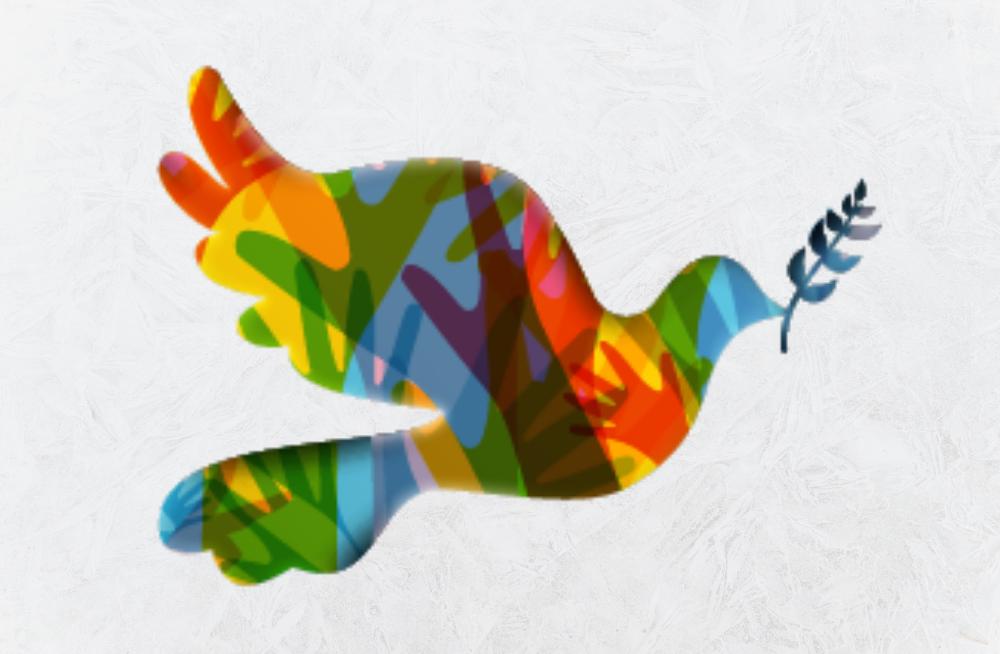
Dig Deeper
Brigham, Erin M. See, Judge, Act: Catholic Social Teaching and Service Learning.
Revised ed. Winona, MN: Anselm Academic, 2018.
USCCB. “Sharing Catholic Social Teaching: Challenges and Directions. ” 2020, www.usccb.org/resources/sharing-catholic-social-teachingchallenges-and-directions.
Laudato si’
Laudato si’ is a very important encyclical composed by Pope Francis in 2015. He wrote this document in order to address the devastating effects that humans have had on our ecosystem, and to propose a new ethic grounded in interdependence with rather than exploitation of the environment. This encyclical offers a framework for understanding our ecological crisis and finding solutions to care for the natural world.
Pope Francis emphasizes the necessity of social, economic and environmental justice and protecting our common home. Citing the Patriarch Bartholomew, the pope affirms that humans have committed sins in their treatment of the earth: “for human beings … to destroy the biological diversity of God’s creation; for human beings to degrade the integrity of the earth by causing changes in its climate, by stripping the earth of its natural forests or destroying its wetlands; for human beings to contaminate the earth’s waters, its land, its air, and its life—these are sins” (8). He thus calls upon human beings to respect the laws of nature and the equilibrium among the creatures of the world. While Genesis states that God gave humans a powerful role in the created world, they also have the responsibility to represent him faithfully by taking care of our common home. We are expected to respect the gift we were given. The pope writes, then, with the hope that his encyclical “can help us acknowledge the appeal, immensity, and urgency of the challenge we face” (15).
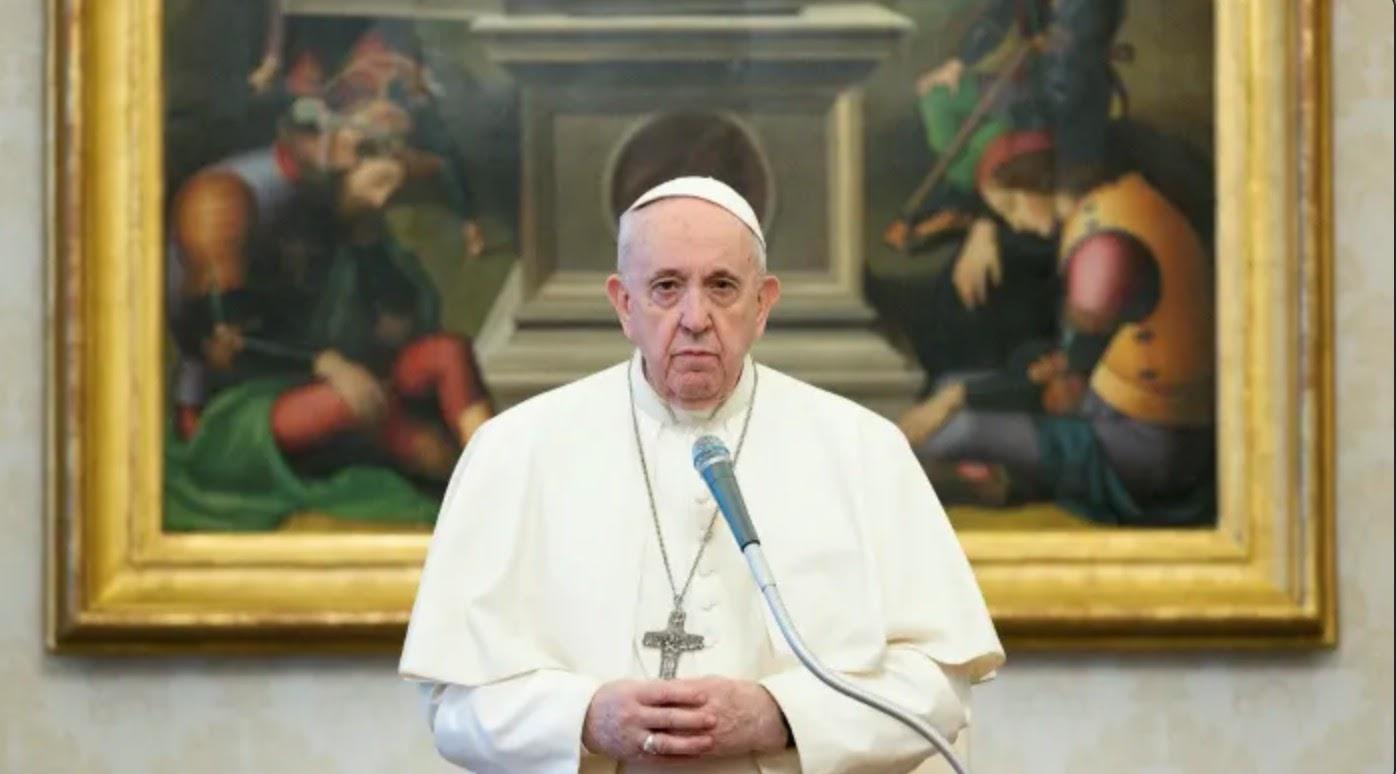
Throughout Laudato si’, Pope Francis expresses the significance of caring for creation through the concept of integral ecology. Integral ecology is the assertion that humans are unified with nature in an interconnected web of relationships. Rather than viewing humans and the natural world as two separate entities, Pope Francis states that humans should cultivate an intimate relationship with nature. As a whole, the ecosystem and humans encounter similar challenges; whether it is climate change or social or economic issues, all of these challenges impact one other. For the environment and humans to flourish, it is essential to understand the various points where these points interconnect. Pope Francis thus explains:
“We depend on these larger systems for our own existence. We need only recall how ecosystems interact in dispersing carbon dioxide, purifying water, controlling illnesses and epidemics, forming soil, breaking down waste, and in many other ways which we overlook or simply do not know about. Once they become
conscious of this, many people realize that we live and act on the basis of a reality which has previously been given to us, which precedes our existence and our abilities” (140).
If humanity continues to discount the great value of the ecosystem, it will damage both it and ourselves. The environment depends upon us to care for it, just as we depend on it for our survival. It is thus critical to practice integral ecology, which encourages humans to identify their role in the environmental crisis and to take the initiative to restore the planet’s health. The Pope calls this “ecological citizenship” and encourages us to practice it by respecting our surroundings and minimizing our harmful effects on the environment. We can, for example, take action by reducing our ecological footprint, developing sustainable environmental policies, and engaging in ecological education in all of our social institutions. Pope Francis concludes his encyclical with two prayers for spiritual reflection.

“A Prayer for the Earth” All-powerful God, you are present in the whole universe and in the smallest of your creatures. You embrace with your tenderness all that exists. Pour out upon us the power of your love, that we may protect life and beauty. Fill us with peace, that we may live as brothers and sisters, harming no one. O God of the poor, help us to rescue the abandoned and forgotten of this earth, so precious in your eyes. Bring healing to our lives, that we may protect the world and not prey on it, that we may sow beauty, not pollution and destruction. Touch the hearts of those who look only for gain at the expense of the poor and the earth. Teach us to discover the worth of each thing, to be filled with awe and contemplation, to recognize that we are profoundly united with every creature as we journey towards your infinite light. We thank you for being with us each day.
Encourage us, we pray, in our struggle for justice, love and peace.
“A Christian Prayer in Union with Creation” Father, we praise you with all your creatures. They came forth from your all-powerful hand; they are yours, filled with your presence and your tender love. Praise be to you!
Son of God, Jesus, through you all things were made. You were formed in the womb of Mary our Mother, you became part of this earth, and you gazed upon this world with human eyes. Today you are alive in every creature in your risen glory. Praise be to you!
Holy Spirit, by your light you guide this world towards the Father’s love and accompany creation as it groans in travail. You also dwell in our hearts and you inspire us to do what is good. Praise be to you!
Triune Lord, wondrous community of infinite love, teach us to contemplate you in the beauty of the universe, for all things speak of you. Awaken our praise and thankfulness for every being that you have made. Give us the grace to feel profoundly joined to everything that is.
God of love, show us our place in this world as channels of your love for all the creatures of this earth, for not one of them is forgotten in your sight. Enlighten those who possess power and money that they may avoid the sin of indifference, that they may love the common good, advance the weak, and care for this world in which we live. The poor and the earth are crying out. O Lord, seize us with your power and light,
help us to protect all life, to prepare for a better future, for the coming of your Kingdom of justice, peace, love and beauty. Praise be to you!
Dig Deeper
Brigham, Erin M. See, Judge, Act: Catholic Social Teaching and Service Learning. Revised ed. Winona, MN: Anselm Academic, 2018.
Pope Francis. Laudato Si’ (24 May 2015). 18 June 2015, www.vatican.va/content/francesco/en/encyclicals/documents/papafrancesco_20150524_enciclica-laudato-si.html.
“Laudato Si’: Summary & Action Steps.” Catholic Climate Covenant, catholicclimatecovenant.org/resource/laudato-si-summary-actionsteps.
Saint Kateri Conservation Center
Mission Saint Kateri is the patron saint of integral ecology and of the environment. Because of this, it only makes sense that the conservation center’s purpose is to promote Catholicism, ecology, and life as well as promoting healthy living habits. Placing God at the center of their goals, the conservation center seeks to accomplish many ecological tasks:
• Restoring all habitats for people, animals, and plants • Conserving biodiversity and energy • Producing healthy food • Limiting climate change • Maintaining unpolluted water and air • Restoring faith and relationships with God, nature, and one another
According to its mission statement, the organization “seek[s] to stimulate and sustain the ‘ecological conversion’ called for by Saint John Paul II and later endorsed by his successors Pope Benedict XVI and Pope Francis. Ecological conversion begins with a personal conversion toward God, and extends to the entire community of life—past, present, and future.

To meet our enormous ecological challenges, we strive to help ‘rebuild’ the Church, much as Saint Kateri Tekakwitha and Saint Francis of Assisi have done. This includes promoting our Catholic faith and supporting the ‘ecological conversion’ necessary to protect and sustain the integrity of God’s creation.”
Vision “We envision a faithful, loving home on Earth for all people and the whole of God’s creation. The Earth is our home. All of God’s creatures, from water, soil, and air, to plants and animals, are our brothers and sisters. Human beings, made in the image and likeness of God, are an integral part of nature and are responsible for its cultivation and care.
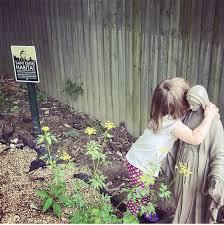
We seek to build a Catholic faith community focused on God, his Church, and the restoration of his creation, by encouraging religious expression in the care of creation and by addressing the fundamental religious and moral dimensions of ecology and the environment. ”
History Saint Kateri’s Conservation Center promotes faith, internal ecology, and life. The center was founded in 2000 by Bill Jacobs, and was named in honor of Saint Kateri Tekakwitha (16561680), who was born into the Mohawk tribe in upstate New York. Upon her conversion at age 19, Kateri experienced opposition among the Mohawks fled to Sault St. Louis (near Montreal) to live with a Christian native community. She was known for her physical austerities and is considered the patron saint of indigenous peoples, integral ecology, and the environment. Inspired by the life of this Native American saint, the Saint Kateri Conservation Center places God at the center of their work and is organized and operated exclusively for charitable, religious, educational, and scientific purposes. More specifically, it seeks to apply and integrate the wisdom and knowledge of the Bible and church tradition to various ecological initiatives. One area the group focuses on is education: they have been collecting and sharing writings on this topic on its website library since 2000. Believing that “people are to be co-workers with God in the care and cultivation of creation, ” it also supports the construction of “Saint Kateri Habitats” designed to build faith and restore the created order. They also conserve land and water for public benefit, including nature preserves, parks, forests, wetlands, gardens, farms, and religiously-owned land. Saint Kateri lived in a time when the air was clean, the land and water was filled with biodiversity, and the ecosystems were healthy. This situation enabled her to connect and interact with the plants and animals in a deeper way than many of us do today. The Saint Kateri Conservation Center attempts to reclaim these interconnections by inspiring and supporting Catholics who restore backyards and rivers to healthy habitats for people and animals. Catholics are encouraged to plant milkweeds, goldenrods, trees, and other native plants in these habitats to demonstrate their commitment to the natural world, biodiversity, and sustainability.
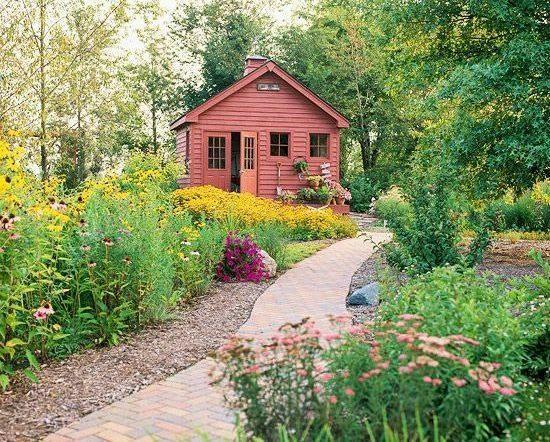
To encourage the restoration of habitats and the creation of gardens, the organization encourages participants to “register their Saint Kateri Habitat, be featured on the Saint Kateri online Esri Story Map, and exercise the option to purchase a yard sign to identify their habitat.” Designed Saint Kateri Habitats contain at least two of the following: 1.
2. Food, water, cover, and space for wildlife, including habitat for pollinators and other terrestrial and aquatic organisms. Native trees, shrubs, herbaceous plants, ecosystems.
3. Food, water, cover, and space for people, including vegetable gardens, flower gardens, community-supported gardens, indoor gardens and farms.
4. Ecosystem services, such as pollination, clean air and water, carbon storage for climate regulation, and religious faith arising from interactions with the “Book of Nature.”
5. Clean energy and sustainable practices of gardening, farming, and landscaping.
6.
Sacred places for worship, prayer, and contemplation, including Mary gardens, prayer gardens, and rosary gardens. The habitats must also have some religious expression, such as crosses, grottos, stations of the cross, wayside shrines, or statues of Mary or Catholic saints. The program is beneficial because it brings people closer to God and his church while protecting the integrity of creation.
Advocacy The Saint Kateri Conservation Center has been evangelizing and teaching about Catholic ecology for 20 years. They understand the need to stop this moral crisis that makes humans societies feel as if they have the right to destroy the environment and the integrity of God’s creation. It is because of this that it has created education and outreach programs both online and “ on the ground.”
Some of the online methods it uses are its website, where they have acquired an extensive Catholic ecology library, and social media. These pages include Facebook, Twitter and Instagram accounts. Below we have listed the names of each respective account for your convenience:
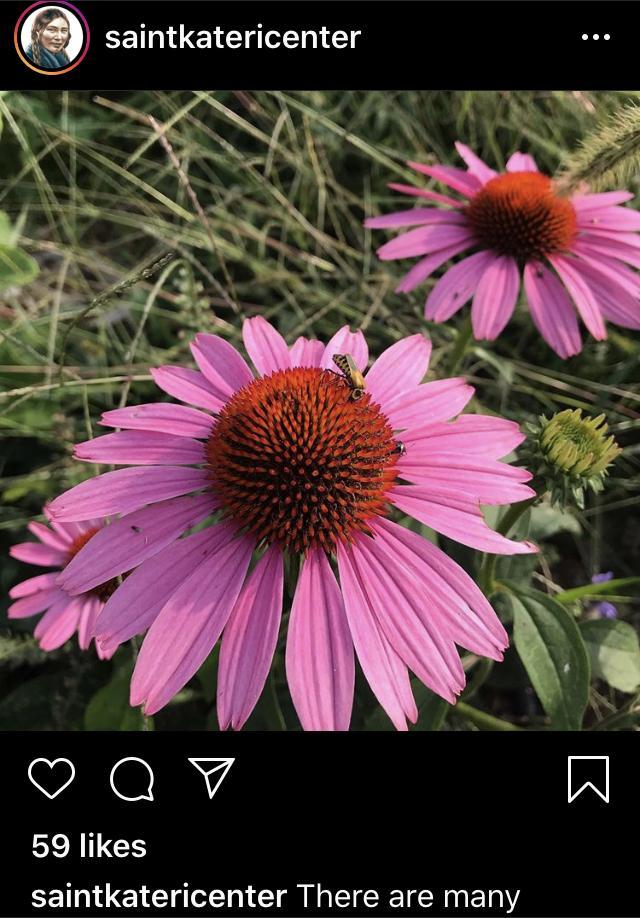
Facebook: @saintkaterictr Twitter: @SaintKateriCtr Instagram: @saintkatericenter
As for their work on the ground, the Saint Kateri Conservation Center offers a variety of presentations, workshops, and ecological retreats to learn more about God’s creation and about what you can do to help. In the future, they plan to add to their educational database by creating new videos and webinars and adding new books, courses, and curricula.
There is more to the conservation center than just education programs. It also provides a number of habitat programs to fight the “insect apocalypse.” The center has recognized that the number of pollinator species (i.e., bees and butterflies) in the world is rapidly decreasing because of people damaging native plants and ecological communities. Because of this, the Center has designated more than 80 habitats designed to address this problem in the United States, Canada,
Honduras, Poland, India, and Cameroon. To the left we can see a girl by the name of Sydney Machion participating in one of the youth projects to create new habitats for insects.
One specific bug that Saint Kateri’s Center is trying to preserve is the western monarch butterfly. The dwindling habitats in California are causing this butterfly to go extinct. The Saint Kateri Conservation Center is working with Catholics in the area to create habitats which must include at least two of the following six elements:

1. Food, water, cover, and space for wildlife, including habitat for pollinators and other terrestrial and aquatic organisms.
2.
3.
4.
5. Native trees, shrubs, herbaceous plants, and ecosystems.
Food, water, cover, and space for people, including vegetable gardens, flower gardens, community-supported gardens, indoor gardens, and farms.
Ecosystem services, such as pollination, clean air and water, carbon storage for climate regulation, and religious faith arising from interactions with the “Book of Nature. ”
Clean energy and sustainable practices of gardening, landscaping, and farming.
6. Sacred spaces for worship, prayer, and contemplation, including Mary gardens, prayer gardens, and rosary gardens.
Dig Deeper
Jacobs, Bill, and Kathleen Hoenke. “Saving Monarchs: The Saint Kateri Conservation Center Seeks Help from California Catholics.” Catholic Ecology, 21 Jan. 2019, catholicecology.net/blog/saving-monarchs-saint-kateri-conservationcenter-seeks-help-california-catholics.
Jacobs, W. “SAINT KATERI TEKAKWITHA CONSERVATION CENTER INC.” SAINT KATERI TEKAKWITHA CONSERVATION CENTER INC - GuideStar Profile, 2014, www.guidestar.org/profile/46-1437406.
Montez, Elisa, et al. “Mission and Vision.” Saint Kateri Conservation Center, 24 July 2020, www.kateri.org/mission-and-vision/.
Montez, Elisa, et al. “Our Values.” Saint Kateri Conservation Center, 20 June 2020, www.kateri.org/our-values/.
Sheridan, Rose, et al. “Education and Outreach.” Saint Kateri Conservation Center, 21 July 2020, www.kateri.org/education-and-outreach/.
Sheridan, Rose, et al. “As Catholics Living Our Faith, We Are Restoring God’s Creation!” Saint Kateri Conservation Center, 10 June 2020, www.kateri.org/as-catholics-living-our-faith-we-are-restoring-gods-creation/.
“The Saint Kateri Tekakwitha Conservation Center.” Catholic Ecology, catholicecology.net/blog/saint-kateri-tekakwitha-conservation-center.






